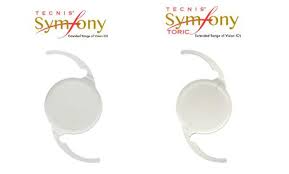LASIK in your 50s?
Discovering the Advantages of LASIK for Those 50 and Older As we progress through the aging process, our visual requirements often change, making...
2 min read
 The Rochester Eye & Laser Team
:
Sep 28, 2018 3:44:49 PM
The Rochester Eye & Laser Team
:
Sep 28, 2018 3:44:49 PM

 Clear Lens Exchange, also called Refractive Lens Exchange (RLE), replaces your eye's clear natural lens with an artificial intraocular lens (IOL) to correct your refractive error and achieve sharper focus, reducing, or eliminating your need for reading glasses or bifocals.
Clear Lens Exchange, also called Refractive Lens Exchange (RLE), replaces your eye's clear natural lens with an artificial intraocular lens (IOL) to correct your refractive error and achieve sharper focus, reducing, or eliminating your need for reading glasses or bifocals.
This procedure will correct near and far vision issues, as well as astigmatism, giving patients, sometimes for the first time in their life, the ability to see well without glasses. An additional benefit is that if you have not developed cataracts in your lens before the procedure, you will not ever develop a cataract following the procedure.
While lens replacement surgery technically does not have FDA approval, some eye surgeons will perform the procedure off label in certain circumstances. This is legal and sometimes is the most effective way to correct particular vision problems.
Clear Lens Exchange typically is for people with presbyopia or extreme farsightedness, for whom LASIK, PRK surgery generally are not suitable.
Presbyopia affects just about everyone and becomes noticeable sometime after age 40 in most cases. Presbyopia is a naturally occurring age-related condition where your eye's natural lens becomes more firm and inflexible, and you lose the ability to focus on near objects.
If you have both presbyopia and moderate to severe hyperopia, Clear Lens Exchange may be the only viable option for clear vision and minimal reliance on glasses after surgery.
Lens replacement surgery also can correct myopia (nearsightedness), but generally if LASIK or PRK, are viable procedures, those treatments are used. If you are over 55 years old, Clear Lens Exchange is a viable option to LASIK and PRK.
The procedure for Clear Lens Exchange is virtually identical to cataract surgery. The difference is that the lens being replaced is clear, rather than a cloudy lens due to a cataract.
As in cataract surgery, three types of lenses, known as Intraocular Lens (IOL) are available to replace your natural lens, depending on your vision needs and the health of your eyes.
Monofocal lenses provide clear vision at distance, intermediate or near ranges — but not all three at once. You will most likely need to continue to wear glasses if you have a multi-distance vision problem.
Toric lens corrects existing astigmatism and the goal is to reduce your need to wear glasses for distance.
A multifocal lens provides clear vision at multiple distances, and will reduce, or eliminate your dependency on glasses for all ranges of vision.
With intraocular lenses, there is no "one size fits all," and Dr. Lindahl will recommend an IOL that is most suitable for your individual needs.To learn more about Clear Lens Exchange, or to see if you are a good candidate, contact our office at (585) 252-5782.

Discovering the Advantages of LASIK for Those 50 and Older As we progress through the aging process, our visual requirements often change, making...

IOL stands for intraocular lens, and it’s a medical device that replaces the lens of your eye after it’s removed during cataract surgery. There are...

Medicare and a majority of health insurance plans usually cover most of the cataract surgery along with a standard cataract lens.This will give you...